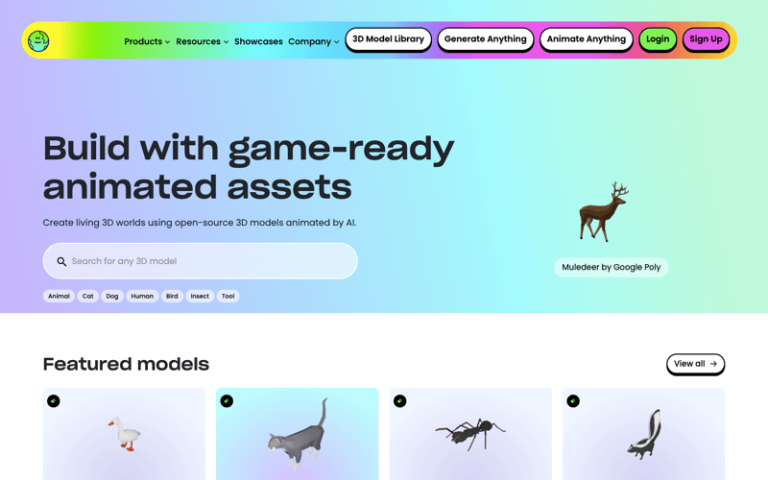Home » AI Tools » AI Art Generator » Alpaca AI
Alpaca AI
Introduction: Alpaca AI is an AI tool designed for artists, offering features like sketch rendering, seamless editing, and texture application.

What is Alpaca?
Alpaca is a language model that is based on the LLaMA (Large Language Model Meta AI) model, which is an open-source language model released by Meta Research. It is developed by researchers from Stanford University and is designed to follow instructions similar to ChatGPT after being fine-tuned.
Main Features
- Instruction Following: Alpaca is fine-tuned to respond to instructions, making it capable of understanding and executing a variety of tasks based on textual input.
- Cost-Effectiveness: Alpaca is known for its ability to perform well even with a relatively small model size, which makes it cost-effective for users who want to utilize a powerful language model without the high computational costs associated with larger models.
- Customization: Alpaca can be fine-tuned further on specific tasks or datasets, allowing for greater customization to meet the needs of different users and applications.
- Open-Source Basis: Being based on the LLaMA model, Alpaca benefits from the open-source nature of LLaMA, which encourages collaboration and transparency in AI research.
- Data Generation Strategy: Alpaca’s training involves a self-instruct approach, where it uses a seed set of human-written instruction-output pairs and then generates more instructions through interaction with a language model like OpenAI’s text-davinci-003.
Pros and Cons
- Creative Flexibility
- Non-Destructive Editing
- Collaboration Features
- User-Friendly
- Resource Intensive
- Limited Scope
- Cost
How to Use Alpaca?
- Prerequisites: To train Alpaca on your own hardware, you would need to meet certain prerequisites, such as having access to the necessary computational resources and software dependencies.
- Training Data: You would need to prepare or obtain a dataset that aligns with the tasks you want Alpaca to perform. This could involve creating instruction-output pairs that the model can learn from.
- Fine-Tuning: The process of fine-tuning Alpaca involves training the model on your specific dataset to adapt it to the tasks you have in mind. This is done through a process of supervised learning, where the model adjusts its parameters based on the input-output examples provided.
- Evaluation: After fine-tuning, it’s important to evaluate Alpaca’s performance to ensure it meets your expectations. This can be done through testing on a separate dataset or through qualitative assessments.
- Deployment: Once satisfied with the model’s performance, you can deploy Alpaca in your application or integrate it into your workflow to start leveraging its capabilities.







